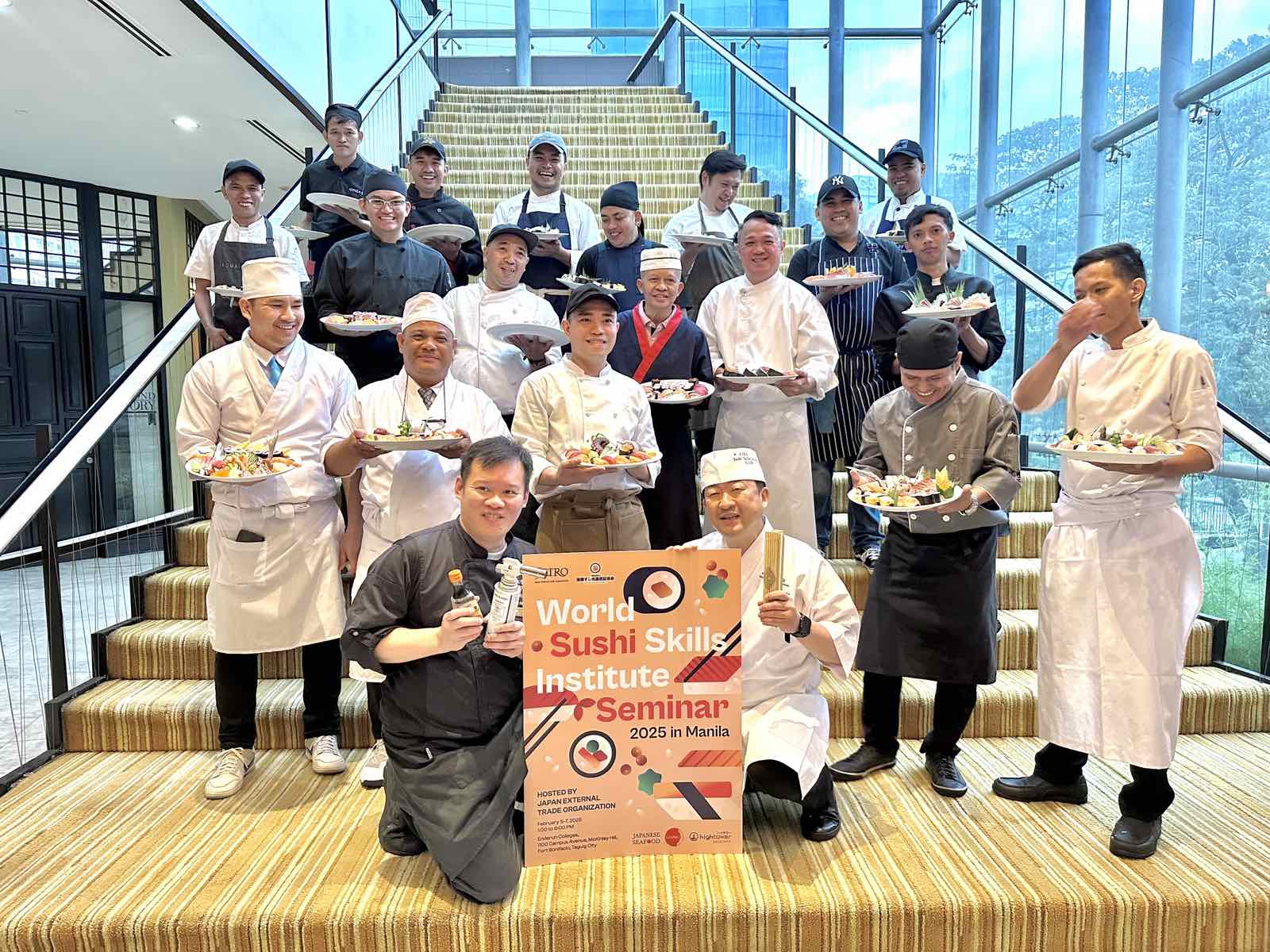Sushi without borders: Chef Hirotoshi Ogawa's global mission
Bringing Japan's culinary artistry to the world
Sushi is more than just food—it is an intricate balance of history, craftsmanship, and culture. Few embody this philosophy more than Chef Hirotoshi Ogawa, a globally renowned sushi master and director general of the World Sushi Skills Institute. From training under Tokyo’s finest sushi masters to losing a restaurant in a devastating earthquake, Chef Ogawa’s journey has shaped him into one of the world’s foremost ambassadors of sushi education.
A global mission to educate and preserve tradition
In a recent interview with The Manila Bulletin, before his World Sushi Skills Institute Seminar at Enderun Colleges last Feb. 5, Chef Ogawa shared insights into his lifelong mission of teaching the art of sushi.
Chef Ogawa began his career in Tokyo in 1994, where he trained rigorously under esteemed sushi masters. Over the years, he developed expertise not only in sushi-making but also in food safety, knife skills, and presentation. As the founder of Ogawa Sushi in Tokyo, he gained international recognition for his meticulous approach to sushi craftsmanship. His reputation led him to serve as a culinary advisor to the Japanese government, advocating for authentic Japanese cuisine across the globe.

Today, Chef Ogawa has taken his expertise beyond the walls of his former restaurants, dedicating his life to teaching the art of sushi. He has traveled to over 40 countries, conducting educational seminars that emphasize technique, food safety, and respect for tradition. His recent engagement in Manila—the World Sushi Skills Institute Seminar 2025—brought his teachings to Filipino chefs, providing them with an in-depth understanding of authentic sushi preparation.
“Even though sushi seems simple, just a piece of fish over rice, true mastery takes years of experience,” he says. “Sushi chefs must consider everything—from the quality of the rice to the knife skills used in preparation.”
His approach highlights an often-overlooked aspect of sushi: the rice. “Most people think good sushi comes from high-quality fish, but the rice is actually 60 percent of the taste,” he explains. “The proper preparation of rice—its texture, temperature, and seasoning—is crucial.”

In 2011, Japan was struck by the Great East Japan Earthquake, one of the most catastrophic natural disasters in modern history. Among those deeply affected was Chef Ogawa, whose Tokyo restaurant was lost to liquefaction—a lesser-known but devastating consequence of the quake. As Japan reeled from the tragedy, he found himself not only grappling with personal loss but also seeking a renewed sense of purpose.
Rather than retreating into despair, Chef Ogawa redirected his skills to aid survivors. He prepared and distributed onigiri rice balls at evacuation centers, an act that reinforced his belief in food’s power to comfort and heal. “I was so welcomed and appreciated by the survivors,” he recalls. “That’s when I realized that this is something I should keep doing—not just serving food, but sharing knowledge.”
Overcoming challenges
While Chef Ogawa champions tradition, he acknowledges the global evolution of sushi. Fusion cuisine, which incorporates local ingredients into classic Japanese techniques, is something he both welcomes and critiques.
“It’s amazing to see how sushi is evolving worldwide,” he says. “Here in the Philippines, it’s exciting to see creations like ‘lumpia sushi.’ It’s important to appreciate these adaptations while also understanding the origins of traditional sushi.”

However, he warns against disregarding fundamental principles. “We must respect history while innovating responsibly. It’s not just about creativity—it’s about maintaining quality and ensuring food safety.”
For Chef Ogawa, sushi mastery is a lifelong commitment. “In Japan, some schools offer three-month courses and call students ‘sushi chefs’ upon graduation. But real mastery takes decades,” he states. “Even after 30 years, I am still learning.”
He believes that sushi chefs must continuously refine their skills and adapt to regional differences. “Each country has different water quality, rice varieties, and even voltage in cooking appliances. These small factors make a difference in how sushi should be prepared in different parts of the world,” he says.

Beyond technique, Chef Ogawa sees sushi as a cultural export, much like Japan’s famed anime industry. He draws parallels between food and media, both of which introduce Japanese traditions to international audiences. Chef Ogawa says, “Anime has helped spread Japanese culture worldwide, and I see sushi in the same way. If something is good, why not share it with the world?”
His advocacy extends to elevating the profession of sushi chefs globally. He was shocked to discover how differently sushi chefs are valued in various countries. “In France, chefs are highly respected, but in some places in South America, they are underpaid, sometimes even taking leftovers home to feed their families,” he notes. “I want to help change that by raising awareness and improving education.”
Sushi's future and global appeal
Despite his insistence on precision and tradition, Chef Ogawa believes sushi should be enjoyed without pretension. “There is no single ‘correct’ way to eat sushi,” he says. “If you like to dip it in a lot of soy sauce, that’s fine—as long as you are mindful of others around you.”
One aspect of sushi etiquette that he does emphasize, however, is avoiding strong perfumes or colognes at sushi restaurants. “The aroma of sushi is delicate, and strong scents can interfere with the experience of others,” he advises.
Looking ahead, Chef Ogawa remains committed to his mission. He is set to open his own sushi school in Narita, Japan, where he will continue training future generations of chefs. “My goal is not to run a business, but to create better sushi chefs worldwide,” he says. “Through education, we can ensure that sushi’s legacy lives on with integrity.”
From rebuilding after tragedy to becoming a leading global advocate for sushi education, Chef Hirotoshi Ogawa’s journey is one of resilience, passion, and dedication. As he continues to share his craft with the world, he remains a steadfast guardian of sushi’s past, present, and future.